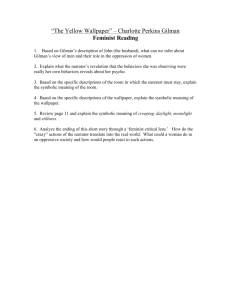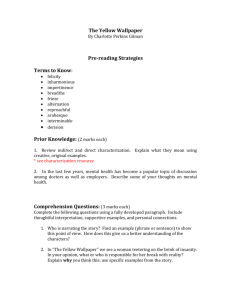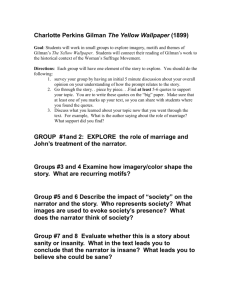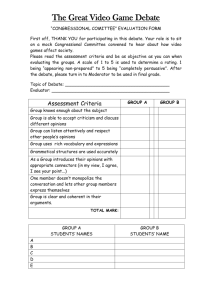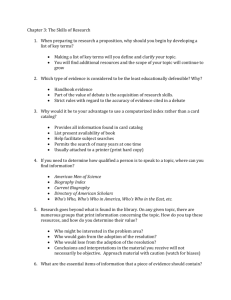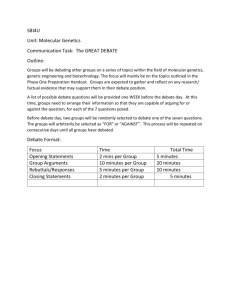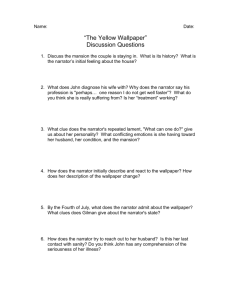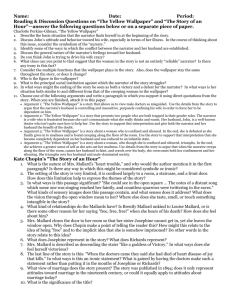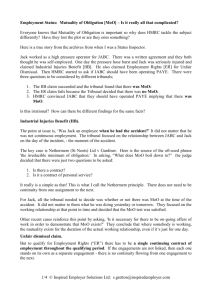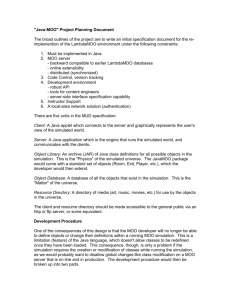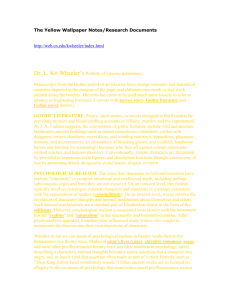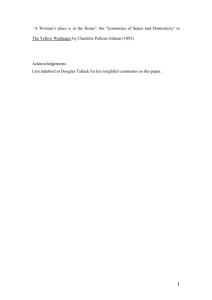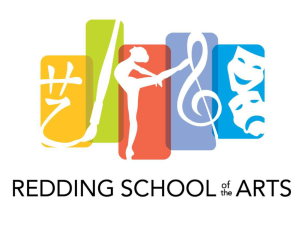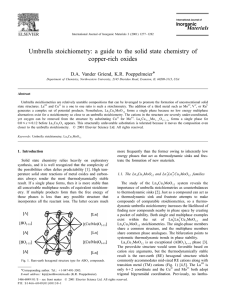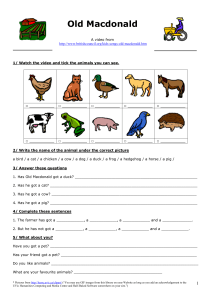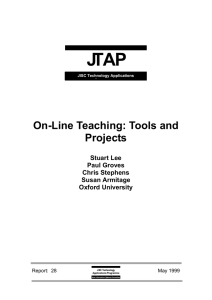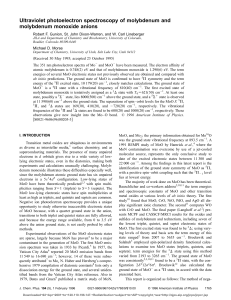A MOO Debate
advertisement
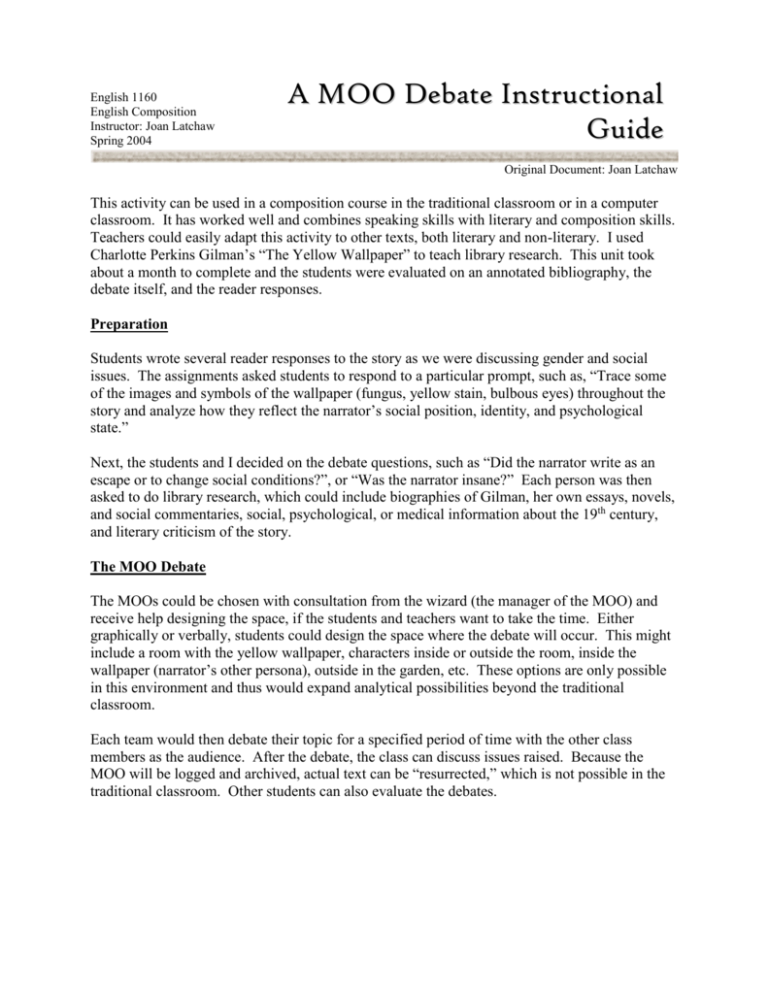
English 1160 English Composition Instructor: Joan Latchaw Spring 2004 A MOO Debate Instructional Guide Original Document: Joan Latchaw This activity can be used in a composition course in the traditional classroom or in a computer classroom. It has worked well and combines speaking skills with literary and composition skills. Teachers could easily adapt this activity to other texts, both literary and non-literary. I used Charlotte Perkins Gilman’s “The Yellow Wallpaper” to teach library research. This unit took about a month to complete and the students were evaluated on an annotated bibliography, the debate itself, and the reader responses. Preparation Students wrote several reader responses to the story as we were discussing gender and social issues. The assignments asked students to respond to a particular prompt, such as, “Trace some of the images and symbols of the wallpaper (fungus, yellow stain, bulbous eyes) throughout the story and analyze how they reflect the narrator’s social position, identity, and psychological state.” Next, the students and I decided on the debate questions, such as “Did the narrator write as an escape or to change social conditions?”, or “Was the narrator insane?” Each person was then asked to do library research, which could include biographies of Gilman, her own essays, novels, and social commentaries, social, psychological, or medical information about the 19th century, and literary criticism of the story. The MOO Debate The MOOs could be chosen with consultation from the wizard (the manager of the MOO) and receive help designing the space, if the students and teachers want to take the time. Either graphically or verbally, students could design the space where the debate will occur. This might include a room with the yellow wallpaper, characters inside or outside the room, inside the wallpaper (narrator’s other persona), outside in the garden, etc. These options are only possible in this environment and thus would expand analytical possibilities beyond the traditional classroom. Each team would then debate their topic for a specified period of time with the other class members as the audience. After the debate, the class can discuss issues raised. Because the MOO will be logged and archived, actual text can be “resurrected,” which is not possible in the traditional classroom. Other students can also evaluate the debates.
